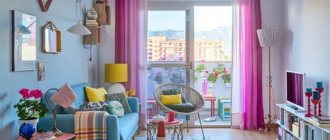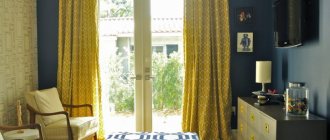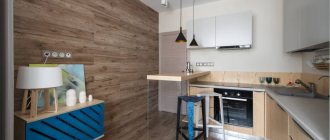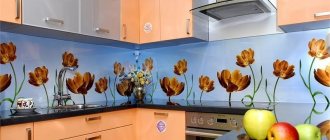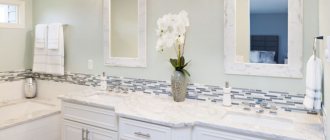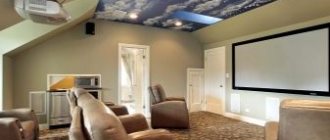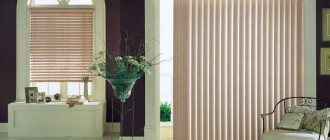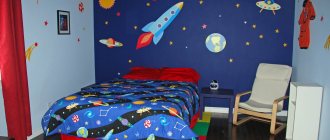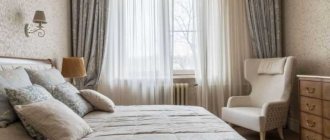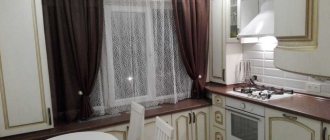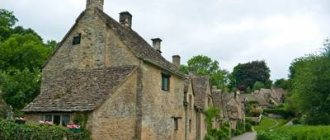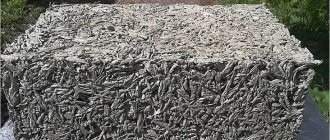Yellow brick house
Many people prefer brick to decorate the facade. A yellow brick house looks attractive and prestigious. You can also combine several different colors, which will add some spice to the finished structure. The design and design work will depend on the choice of color in the future. Therefore, during planning, architects consider various options and try to take into account all the points.
Examples
Having familiarized ourselves with the material, as well as with the projects of residential buildings made of yellow brick, we can conclude that the design itself has both advantages and disadvantages. However, such houses fulfill their main duty and are solid premises for families to live.
- Houses made of yellow brick can be made in different shades , have different number of floors, style and design solutions. For example, the best option is a house with several floors and a large area with a brown roof, inserts and windows in the same shade.
Source
Description of yellow facing brick
Yellow brick for the facade is a fairly popular type of facing brick products, as it creates a feeling of light and warmth, creating a great mood even on gray rainy days.
The production of the yellow species involves the use of various types of raw materials, which determines the variety of color shades of this species.
The yellow type contains the following elements:
- high quality clay;
- lime;
- sand;
- water;
- iron oxide pigment.
The production of this type consists of pressing a mass of the above substances under high pressure, due to which the material is provided with frost-resistant characteristics, as well as hydrophobic properties.
Since natural substances are used in production, and there are quite a few additional components and impurities, this material is environmentally friendly and harmless to health..
After pressing, the material is fired and, if necessary, glazed.
It is the yellow look that is distinguished by the correctness of its shape: each element is made in the shape of a right parallelepiped with a clear outline of the edges and even corners. In addition, any shade of color is resistant to fading. Elements of a yellow hue have a meager variety of shapes and textures, but they differ in many shades precisely in the yellow segment of the palette.
In addition, you should purchase goods from one batch, since the color of different batches may differ slightly, which will affect the appearance of the cladding.
Photo of a yellow brick house:
The unsurpassed effect of yellow in the interior
As you know, a room with yellow walls always looks cozy and evokes a feeling of relaxation and security. However, there is no secret here - everything comes from the depths of our subconscious.
Most living beings need sunlight and warmth, and if there is a critical shortage of it, they suffer greatly and even die.
That is why shades of yellow are perceived by us as vital energy and a feeling of security.
Typically, yellow walls can be seen in the interior of the home of creative people who are optimists in life, extraordinary individuals with a positive attitude and thinking.
It’s as if they themselves are charged with cheerfulness and sunshine, because the color scheme in the house greatly affects the psychological state and mood of the residents.
Finding “your” ideal color can be difficult, but rainbow-bright yellow is truly a universal solution; this color will not leave even the most fastidious person indifferent.
It should be remembered that rich yellow shades, especially with an admixture of warm orange, can visually reduce space.
This is a suitable option for you if you want to make an overly large room more cozy and comfortable.
But what about lovers of sunny yellow who cannot boast of large square meters? – there is great news for you too: light yellow walls are well suited for a small room, and cool shades of this color will even make it visually larger.
By the way, yellow tones can also mask wall defects and smooth out sharp corners.
Yellow color, psychology
The color yellow is associated with the sun, symbolizes sunlight, warmth, and evokes positive emotions. Why is the smiley face yellow? Have you ever thought about it? It's simple - thanks to this color it evokes good associations and a smile.
The yellow bricks “play” beautifully in the sun, and even on a cloudy day the building seems to “glow” from the inside. Another advantage of yellow is that it goes well with almost any color.
However, if you want to get a truly festive home decoration, then use a triad of colors - yellow, orange and red.
Light yellow color - caresses the eye, uplifts the mood, symbolizes wisdom. But a color that is too bright and saturated can quickly become boring.
Yellow, closer to brown, reminiscent of the golden color, symbolizes happiness, glory, wisdom, harmony and culture. However, it should be used in moderation.
The house is golden in color, naturally beautiful, but too heavy to perceive. The same applies to other objects.
Use of yellow bricks
Bricks of various yellow shades are used everywhere:
- At home;
- Utility rooms;
- Gazebos;
- Construction of furnaces;
- Fences;
- Paths;
- Decorative elements on the site and so on.
If you can cover the whole house with light yellow bricks, then it is recommended to decorate windows and doors with bricks with a rich, bright color. That is, apply them in small portions, splashes.
Using yellow bricks of different colors, you can create a beautiful pattern or ornament.
Production technology
With the modern level of production, it is possible to obtain building material of any color.
Various methods are used to obtain certain colors.
These may include:
- Adding dyes to the composition, which allows you to obtain a homogeneous, fully colored brick;
- Brick with an engobed outer layer. Here, they use a rather complex casting technology from yellow clay powders
- Color spraying on the front side of the brick and additional firing. A two-layer brick is obtained, the front part of which is formed by an additional pressed or sprayed layer of yellow clay;
- Gloss. The desired color is obtained by saturating the porous surface of the brick with a mineral dye. Then protective vitreous enamel is applied. Therefore, the front side is characterized by a glossy, glassy sheen.
As you can see, there are many ways to paint brick, some are cheaper, others are more expensive, which naturally affects the final price for the consumer.
Types of colored bricks
Each production has its own methods of coloring products. Because to be competitive in our time, you need not only quality, but also beauty.
Therefore, almost all types of bricks are painted in different colors. Yellow color can be seen among:
- Ceramic blocks;
- Silicate;
- Clinker;
- Lego;
- Hyper-pressed;
- Flexible and other materials.
And if you decide to use yellow brick, then you should choose exactly the type that suits your technical characteristics.
For example, for carrying out facade work or for a fence, you should pay attention to frost-resistant material with a low percentage of moisture absorption.
And for interior work, almost any type of brick is suitable. Here you can only focus on the appearance and price of the product.
Brick type
As mentioned above, bricks come in different types. They differ in composition, manufacturing method, and have different technical characteristics.
In addition, each type is divided into types according to density and size.
Density
There are solid blocks that are used mainly for laying load-bearing walls. Where a high-strength material that can withstand heavy loads is needed.
And hollow blocks are used where the load is not great:
- Cladding of buildings in half brick;
- Internal partitions;
- Fences and so on.
Some bricks have a few voids, others consist almost entirely of cracks. The porous material has low strength and low price.
Size
In addition to density, bricks come in different sizes, from half a brick to double or larger sizes.
Therefore, if you choose yellow brick, for example, for cladding a facade, then you do not have to pay for a whole block.
Half or 0.7 yellow brick is enough. The effect will be the same, but the price is half as much.
Color range of facing bricks, video
Base installation
This stage of work is required when building a yellow brick house. The basement takes on all the negative impacts from temperature changes and seasonal snow melting. To construct the plinth, you can use both clinker blocks and solid ones. The main thing is to raise the outer walls of the house above ground level.
There are several immutable rules for installing a plinth:
- Installation of the base begins from the corners of the foundation. The bricks are laid level and then a control cord is pulled between all corners. The masonry of all rows will be leveled according to it.
- When laying blocks, all joints should be carefully filled with cement-sand mortar.
- The blocks are placed in a bandage, that is, with the upper blocks offset relative to the vertical seam of the lower ones.
- All substandard bricks (with cracks and chips) are rejected.
- The base is laid out in 6-8 rows with mandatory reinforcement of the first and fourth rows.
Yellow brick house designs
Finishing the facade with brick is very popular due to the attractive appearance of the house, which is lined with this material.
To make the building more presentable and original, a combination of several brick colors is used. The Novation company offers ready-made yellow brick house designs, selecting options based on customer requirements. Yellow facing brick is distinguished by its strength, ability to withstand external influences and durability. The following types are classified:
- ceramic
- silicate
- dry pressed
- hyper-pressed
Yellow brick has a number of advantages. The advantages are:
- high strength;
- high breathability;
- clarity of geometric shape;
- the durability of the color retained by the exterior decoration of the house;
- increased moisture resistance;
- fire resistance;
- environmental Safety;
- high resistance to external influences;
- long service life;
- ease of care;
- the ability to lay out arches and niches, acute-angled and curvilinear shapes and patterns;
- ease of restoration work.
It is worth understanding that finishing the facade with yellow brick requires a solid foundation for the house, since the material itself is quite heavy, which must be taken into account in projects of one-story or two-story houses. Novation company specialists, when developing design documentation, take into account all structural loads on the foundation and competently design brick houses.
When developing facade solutions for a project of a 2-story building, or a one-story house made of yellow brick , you can combine it with bricks of other contrasting colors. Brown brick, which can be laid out in various patterns or in the form of inserts on the corners of the house, will go especially well. You can also make smooth transitions from yellow brick of various shades.
The Novation company carries out the construction of yellow brick houses. Our company provides a full range of services for the construction of private houses - design, obtaining a building permit, turnkey construction of a house. Both ready-made projects are available for order, including a one-story or two-story yellow brick house , as well as the possibility of developing an individual project, taking into account all the wishes and requirements of the client. The catalog presents projects of one-story and two-story houses of varying complexity and area. The company's extensive experience allows us to guarantee the construction of a house taking into account all norms and standards.
Current specifications
yellow brick house
The stones owe the above achievements to their physical properties. In order to choose an authentic sample when purchasing, you need to pay attention to the following signs:
- There should be no cracks or chips (this will have a bad effect on strength). If marble coloring is not implied, then its color is monochromatic.
- It is best to choose a strength grade in the range from M150 to M200. This will allow you to withstand up to 75 freezing and thawing cycles. In this case, water absorption can reach as much as 12%.
- Sizes can vary from 25*12*6.6 cm (this is a single type) to 25*12*8.8 cm (this is a double type).
Houses with an attic and a bay window
To improve the architecture of a yellow and brown brick house, some house designs include not only an attic, but also the removal of the lower floor in a cantilever manner or the use of columns, pillars, pylons, pendants and other things.
In this situation, it would be best to use bay windows, which visually and structurally expand the internal space of the attic, and also have a positive effect on illumination and all-round visibility.
Advantages and disadvantages
- Long service life. Brick is a material with a high level of strength. It is resistant to the influence of natural factors and the loads placed on it. The material does not corrode, rot, is resistant to temperature changes and high humidity, which means it guarantees a long service life.
- Environmental safety, since the material is natural, made from natural raw materials.
- Fire safety. Brick is not combustible, spontaneous combustion is impossible, and this is a positive point when choosing a material.
- Soundproofing. Many people prefer silence, to move away from the bustle of the city and be alone with themselves and their thoughts. It is in a brick house that you can afford this, because thick and massive walls absorb most of the noise.
- Easy to care for. Brick is easy to clean, its maintenance will be as simple and convenient as possible.
- Great design potential. With the help of bricks you can make attractive houses for every taste. With the help of a brick you can open up new facets and possibilities.
There are many advantages, but we must not forget about the disadvantages:
- Price. The cost of the material is quite high, so not everyone can afford it. It is worth noting that the cost is justified, since the service life and the absence of the need to carry out repair work justify this.
- Impressive weight. To use bricks, it is necessary to lay a strong foundation and build strong walls.
- Thermal inertia. Brick does not heat up well, so you will have to carefully consider how the house will be heated, you will have to build a high-quality heating system, and also take care of good thermal insulation.
Advantages and disadvantages
An undeniable positive property of yellow brick is its decorative effect. A house whose façade is made of yellow brick will always stand out among other buildings.
In addition, this material has other advantages:
- good sound insulation;
- color fastness . The coating does not fade and is not exposed to sunlight;
- does not require special care, does not attract dirt, and also prevents the formation of mold or fungi;
- frost resistance. This type of cladding can be used in any region, regardless of temperature;
- strength . When exposed to any mechanical and impact actions, the cladding remains unchanged, does not deform, does not crack;
- resistance to any weather conditions. Rain, hail, and strong winds cannot negatively affect brick cladding;
- hydrophobicity. The production technology ensures the material is moisture resistant and incapable of absorbing moisture;
- fire resistance . Brick does not burn and does not support combustion in any way, does not ignite or melt;
- environmental friendliness. Due to the use of natural components in manufacturing, brick cladding is absolutely harmless to humans;
- durability _ The cladding may not lose its properties for many years; in comparison with suspended facade structures or decorative coatings with plaster or paint, it is the most durable and wear-resistant.
The disadvantages of brick cladding include cost, since the material is quite expensive compared to other types of external cladding . In addition, yellow brick is not varied enough in shape: the main element of the yellow type is a parallelepiped.
Brick photo:
Types of white brick
They differ from each other only in thickness. Any deviations from the parameters are impossible, but there is one exception - decorative artificial blocks. Standard white bricks are produced in the following sizes:
- single - 65x120x250 mm;
- one and a half - 88x120x250 mm;
- double - 138x120x250 mm.
Sand-lime bricks can be solid or hollow. The last stones are distinguished by the volume of voids - cylindrical holes. They can make up 15, 25, 30% of their mass.
- Full-bodied: single ones weigh 3.7 kg, one-and-a-half - from 4.2 to 5 kg.
- Hollow ones are single (3.2 kg), one-and-a-half (3.7 kg) and double (5.7 kg).
- Facing (facing) hollow stones are made. Their weight is from 3.7 to 5.8 kg.
The latter type provides reliable protection of the surface of buildings from the influence of the external environment and from mechanical influences. Cladding stones have a relief that makes the surface more attractive.
There are several brands of silicate blocks - M75, M100, M125, M150, M200, M250, M300. The difference between them is the different degree of mechanical strength. For the construction of load-bearing walls, only the hardest stones are used - grades no lower than M200.
Types of bricks for building houses
In construction, different types of building materials are used for different masonry.
Ceramic
Most often, when cottages and brick houses are built, clay building materials are used.
It is used for:
- erection of walls;
- foundation masonry;
- construction of basement floors;
- construction of various columns and other elements.
There are two types of clay bricks:
- full-bodied;
- hollow.
Hollow brick has several advantages:
- less weight;
- better thermal insulation properties;
- the thickness of the external walls is less;
- the weight of the structure is much lighter.
Note! Ceramic building bricks are not recommended for use as a material for load-bearing walls or foundations. It is also undesirable to use it to build a chimney, stoves or any exhaust ducts.
To increase the service life of ceramic raw materials, it must be treated with a water repellent.
Silicate
But silicate material is quite suitable for laying load-bearing walls. It is made from lime and sand.
Double sand-lime brick M 150 has good soundproofing properties, but it also has disadvantages:
- less durable;
- less frost-resistant;
- poor water resistance.
Refractory
This raw material contains 70% refractory clay, which allows it to withstand temperatures up to 2000 degrees, so it is used for:
- stove masonry;
- brick chimneys;
- baths or saunas.
Clinker
Clinker brick is considered the most environmentally friendly and high-quality brick.
It has the following properties:
- good frost resistance;
- waterproof;
- strength.
Most often it is used for cladding the outside walls of houses, but such building materials have a fairly high price.
Brick brands
Each brick has its own specific brand. It indicates the amount of load that 1 square meter of a building material can withstand. For example, in order to build a 2-3 storey cottage made of brick, the M75 and M100 brands are quite suitable.
For the construction of walls of buildings that exceed 3 floors, grade M 125 is used. Frost resistance is indicated by the number of cycles, that is, winter-summer and directly depends on its water resistance.
Good brick, from which houses are built in cities, most often has frost resistance of at least 20-50 cycles, that is, 20-50 years.
The brick on the fragment of the house helps to highlight the main element of the architectural composition of the facade. In this case, the background for it is white plaster walls
Brick cladding is a practical way to finish the bottom of a wall. It goes well with light plaster
The combination of two materials can be an important element of the architectural composition of the facade
Brick and wood. The combination of two natural materials, traditionally used in rural construction, is increasingly found in modern private homes
Brick stripes. Combination of two colors and textures in brick cladding
In the cladding of even small houses, combining brick with other materials allows you to reveal interesting combinations of textures and colors
By leaving a comment you agree to the Privacy Policy
